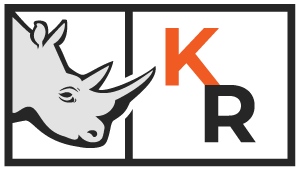In the rapidly evolving landscape of contact centers, the adoption of workforce management tools has become imperative for organizations striving to enhance operational efficiency and customer satisfaction. However, despite their potential to transform operations, many businesses face significant challenges in adopting these contact center tools and realizing their expected return on investment (ROI).
According to the Forrester report “The ROI of Workforce Management Systems: Beyond the Basics,” while 84% of organizations believe WFM tools improve their business performance, only 48% reported being able to quantify the ROI. This reveals the difficulty in translating WFM benefits into concrete financial gains.
The Challenge of Adoption
The adoption of workforce management tools in a contact center environment is not without its challenges. These hurdles can be broadly categorized into the following:
- Technical Challenges: Integration with existing systems can be a complex process, often requiring significant technical overhaul and customization. Many contact centers operate on legacy systems that are not readily compatible with the latest WFM solutions, leading to integration issues that can delay or deter adoption.
- Cultural Challenges: Change resistance is a common phenomenon in any organizational transformation. Employees may be wary of new tools and processes, fearing that such changes might complicate their work routines or even threaten their job security. Overcoming this resistance requires a well-planned change management strategy that addresses these concerns and demonstrates the personal and collective benefits of adopting new technologies.
- Strategic Challenges: Aligning the adoption with the organization’s strategic goals is another significant challenge. Without clear objectives and a well-defined strategy, it’s difficult to select the right tools and implement them in a way that maximizes their impact. Furthermore, the lack of strategic alignment can lead to suboptimal utilization of workforce management tools, diminishing their potential benefits.
Realizing ROI
The ultimate goal of implementing workforce management tools is to achieve a positive ROI by enhancing operational efficiency, improving customer satisfaction, and reducing costs. However, realizing this ROI is not always straightforward and requires a concerted effort across multiple dimensions.
- Efficiency and Productivity: One of the primary benefits of workforce management tools is the optimization of staff scheduling, which directly impacts efficiency and productivity. By accurately forecasting demand and scheduling staff accordingly, contact centers can minimize idle time and ensure that customer inquiries are handled promptly and effectively. However, realizing these benefits requires accurate data and the ability to adapt schedules in real-time, which can be challenging without the right processes and tools in place.
- Customer Satisfaction: Improved customer satisfaction is a key indicator of the successful adoption of workforce management tools. These tools can provide valuable insights into customer interactions, helping organizations identify areas for improvement and tailor their services to meet customer needs more effectively. However, translating these insights into actionable strategies requires a deep understanding of customer behavior and preferences, as well as the agility to implement changes quickly.
- Cost Reduction: While workforce management tools can lead to significant cost savings through improved efficiency and reduced need for overtime, achieving these savings requires a careful balance. Over-reliance on cost-cutting measures can compromise service quality and employee satisfaction, ultimately leading to higher turnover and associated costs. Therefore, organizations must approach cost reduction as part of a broader strategy that also considers the impact on service quality and employee engagement.
Overcoming Challenges and Maximizing ROI
To overcome the challenges of adoption and realize the full ROI of workforce management tools, organizations should consider the following strategies:
- Comprehensive Integration Planning: Develop a detailed plan for integrating workforce management tools with existing systems, including timelines, milestones, and contingency plans for potential technical challenges.
- Effective Change Management: Implement a change management strategy that includes clear communication, training programs, and support mechanisms to address employee concerns and facilitate a smooth transition.
- Strategic Alignment: Ensure that the adoption of workforce management tools aligns with the organization’s strategic goals and objectives, with a clear focus on how these tools will contribute to achieving those goals.
- Continuous Improvement: Adopt a culture of continuous improvement, using the insights and data generated by workforce management tools to refine processes, improve service delivery, and adapt to changing customer needs.
While the adoption of workforce management tools presents challenges, the potential benefits in terms of improved efficiency, customer satisfaction, and ROI are significant. By addressing the challenges head-on and adopting a strategic, data-driven approach to implementation and continuous improvement, organizations can successfully navigate the complexities of adoption and realize the full potential of these transformative contact center tools.
We can help
Knowledge Rhino services ease the adoption process and maximize ROI from workforce management tools. With a deep understanding of the intricacies of contact center operations, Knowledge Rhino provides tailored implementations that seamlessly integrate with existing systems, mitigating technical hurdles. Moreover, our change management strategies foster a positive cultural shift within organizations, ensuring that employees are supported and engaged throughout the transition.
Our strategic alignment process ensures that your investment in workforce management tools is directly linked to organizational goals, driving efficiency, enhancing customer satisfaction, and delivering measurable cost savings. Learn how we can help your organization navigate these complexities, leveraging our expertise to transform challenges into opportunities for growth and optimization.


